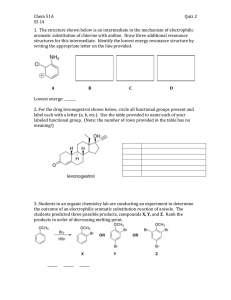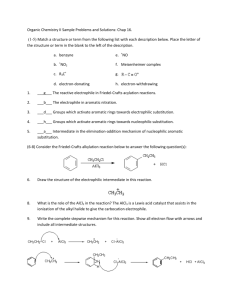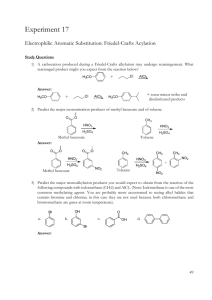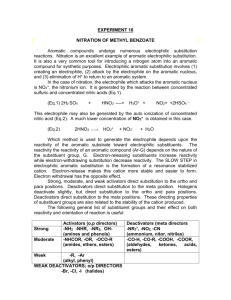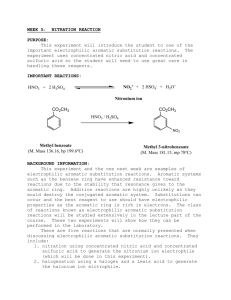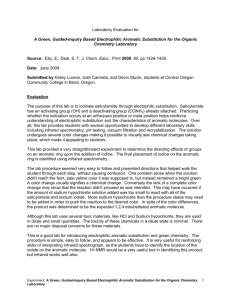Nitration of Toluene (Electrophilic Aromatic Substitution)
advertisement
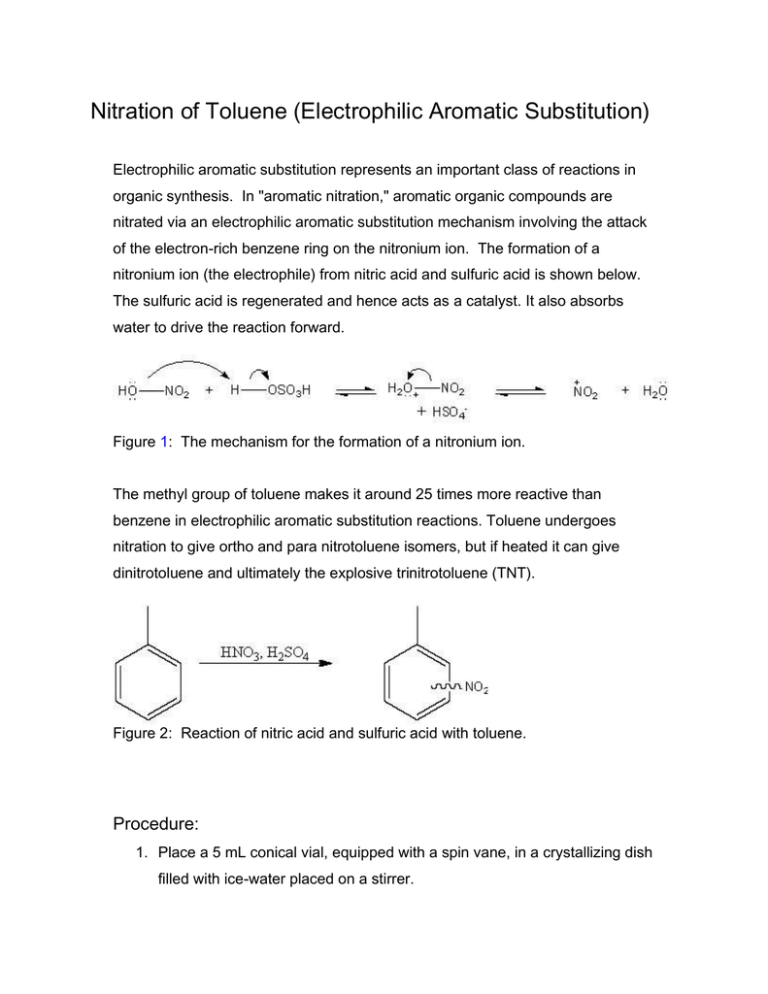
Nitration of Toluene (Electrophilic Aromatic Substitution) Electrophilic aromatic substitution represents an important class of reactions in organic synthesis. In "aromatic nitration," aromatic organic compounds are nitrated via an electrophilic aromatic substitution mechanism involving the attack of the electron-rich benzene ring on the nitronium ion. The formation of a nitronium ion (the electrophile) from nitric acid and sulfuric acid is shown below. The sulfuric acid is regenerated and hence acts as a catalyst. It also absorbs water to drive the reaction forward. Figure 1: The mechanism for the formation of a nitronium ion. The methyl group of toluene makes it around 25 times more reactive than benzene in electrophilic aromatic substitution reactions. Toluene undergoes nitration to give ortho and para nitrotoluene isomers, but if heated it can give dinitrotoluene and ultimately the explosive trinitrotoluene (TNT). Figure 2: Reaction of nitric acid and sulfuric acid with toluene. Procedure: 1. Place a 5 mL conical vial, equipped with a spin vane, in a crystallizing dish filled with ice-water placed on a stirrer. 2. Pour 1.0 mL of concentrated nitric acid into the vial. While stirring, slowly add 1.0 mL of concentrated sulfuric acid. 3. After the addition of sulfuric acid is complete, add 1.0 mL of toluene dropwise and slowly over a period of 5 minutes (slow down if you see boiling. Reaction produces a lot of heat). 4. While Stirring, allow the contents of the flask to reach the room temperature. Stir at room temperature for another 5 minutes. 5. Add 10 mL of water into a small separatory funnel. Then transfer the contents of the flask (from step 4) into the funnel. Rinse the contents with 4 mL of diethyl ether and add it to the separatory funnel. Repeat the ether rinsing one more time with a fresh 4 mL portion of ether. 6. Gently shake the contents of the separatory funnel, let settle, and remove the aqueous layer. 7. Wash the organic layer with a 10 mL portion of 10% sodium bicarbonate (shake and VENT due to the formation of gas), and finally, wash it with 5 mL of water. 8. Discard the aqueous layer, and dry the organic layer using anhydrous sodium sulfate. 9. Evaporate the solvent (critical to keep the temperature as low as possible. Do not overheat.) and obtain the isolated nitrotoluene. 10. Obtain an IR spectrum of the product. For your report: Discuss the different types of isomeric nitrotoluene you could potentially have, and predict the 13 C-NMR spectrum for each. Explain why you shoudn’t take the melting or boiling point of the product. Discuss your IR results. Calculate the % Yield. Needed (per student): H2SO4 (conc.) 1.0 mL HNO3 (conc.) 1.0 mL Toluene 1.0 mL Diethyl ether 8 mL 10% NaHCO3(aq) 10 mL HNO3, H2SO4 Labeled Na2SO4 weighing boats / scoop

